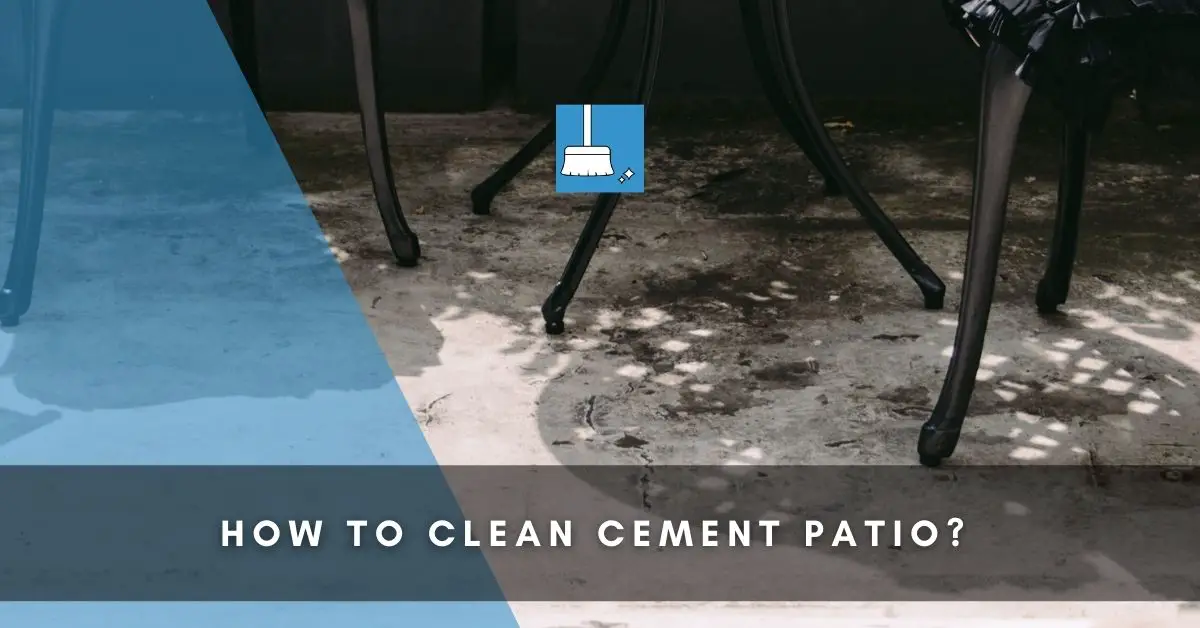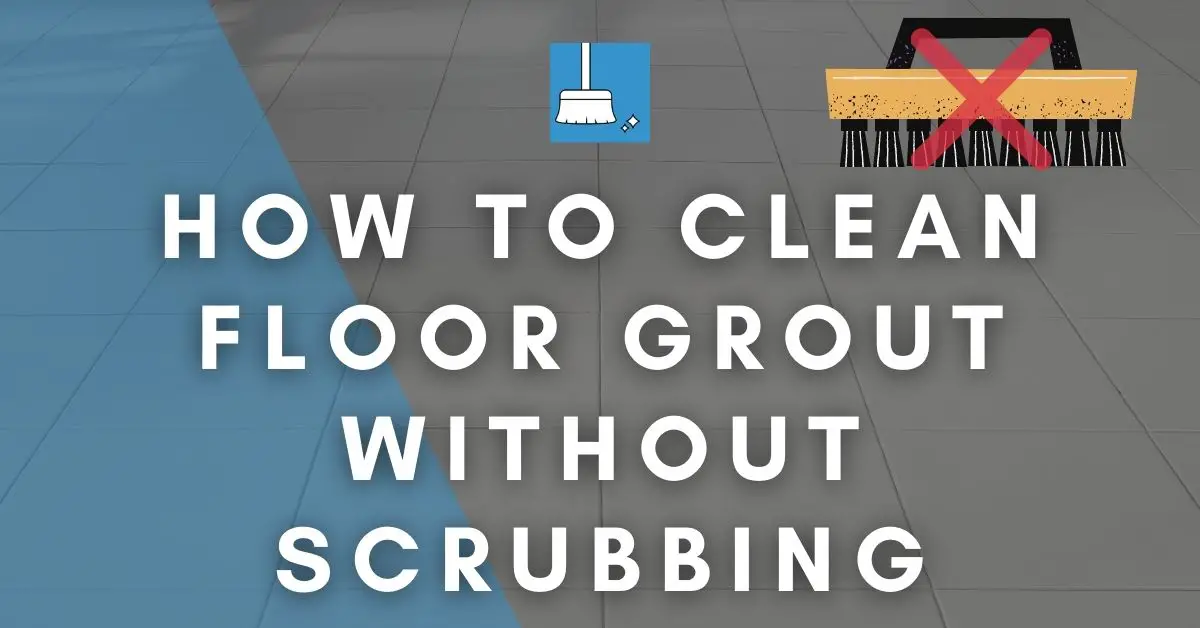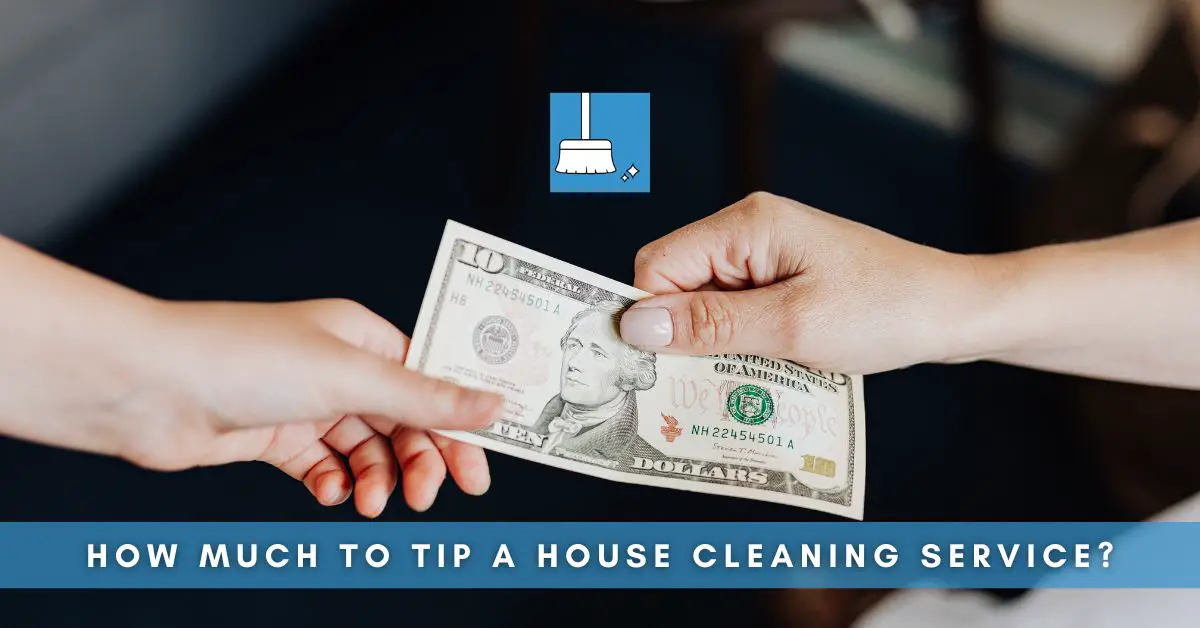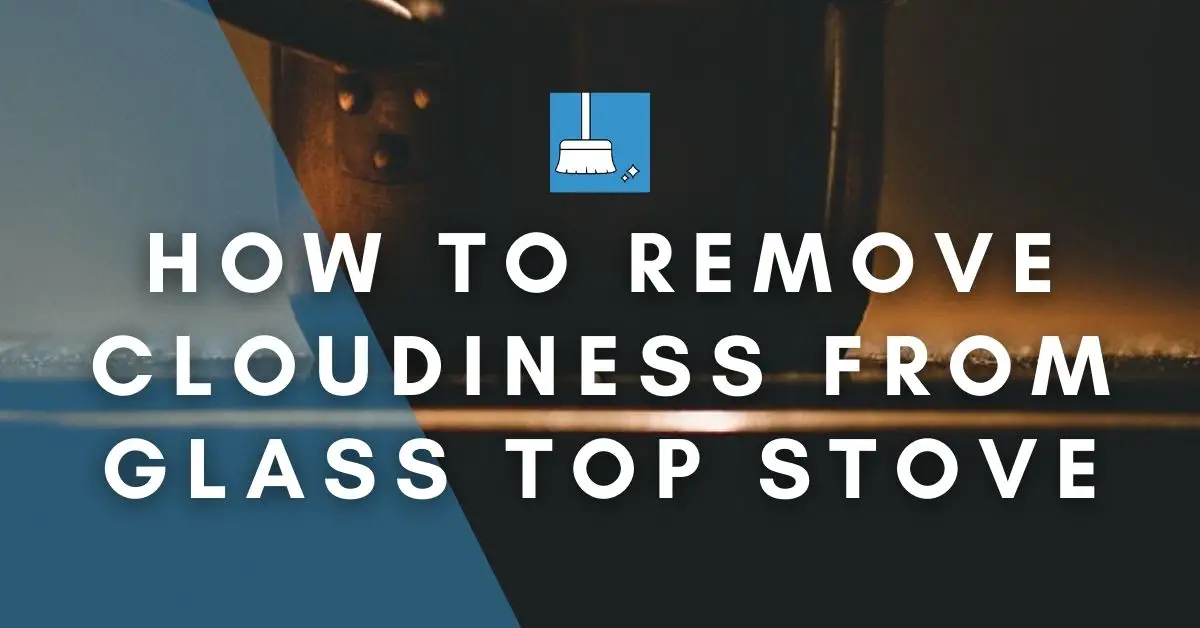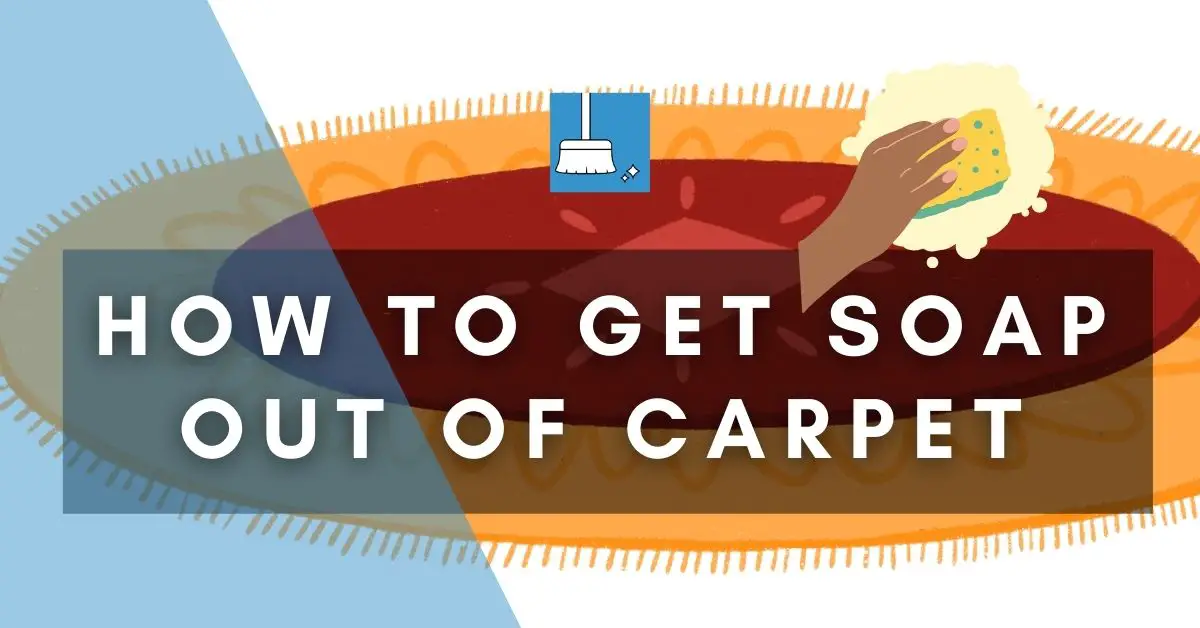The nature of the cement surface allows the crevices to accumulate a lot of moss and dirt. Rust stains and mold aren’t uncommon.
However, we don’t want our friends and relatives to make us feel embarrassed when they visit our home and see a messy patio or a dirty curbing. In this article, we’ll see simple steps to remove many different types of stains from our cement/concrete patios and also some tips for maintenance.
How to Clean Cement Patio?
When you want to clean your cement/concrete patios, choose an overcast day to do the job to let the cleaning solution do its work without evaporating too quickly.
Let’s see various methods to be used in different and unique situations:
Method 1: For General (Routine) Cleaning
This method is good for routine patio cleaning. This usually means that you are cleaning your patio at least once every month.
YOU’LL NEED
1- Broom, leaf blower, or vacuum
2- Non-metallic hard brush
3- Dish soap/Laundry detergent
4- Baking soda
5- White distilled vinegar
6- Bucket of water
STEPS
STEP 1: Remove all potted plants, furniture, and decorative items.
STEP 2: Use a broom to sweep away the dust, fallen leaves, and debris from the cement/concrete surface.
STEP 3: Prepare a solution of 1 cup dish soap/laundry detergent, 1 cup white distilled vinegar, and 1 cup baking soda in a bucket of water.
STEP 4: Use a non-metallic stiff-bristled brush to scrub it into the cement patio floor. Never use a metal-bristle brush.
Warning: Metallic fibers of brushes can get trapped in the cement (which is porous in nature) and rust later on.
By now, most of the stains on the patio would have vanished and the odds of the need for further cleaning would be thin. But in case the stains persist, use a pressure washer to tackle them.
Method 2: For Greasy Cement Patio
If you have tough greasy stains on the patio or it has turned green/brown from algae/mold growth and using vinegar, dish soap and baking soda solution did not help, you will need to pressure wash the cement surface.
CAUTION: Although many websites straightaway tell you to use a pressure/power washer to clean your cement/concrete surfaces, keep in mind that there is always a risk of some sort of pitting lines and surface degradation when you pressure wash the surface. If you have a brick lining on the periphery of your cement patio, then high pressure water may wash away the sand in the mortar that holds the bricks together, thus weakening it.
You can use any pressure washer for this project but a 3000 PSI washer will get the job done quicker. The most ideal setting would be a flow rate (of water) of 15 liters per minute.
The powerful pressure of the water coming out of the pressure washer is directed toward your feet which can hurt your toe/s, so wearing sandals is not recommended. Long sturdy boots are the most ideal. Wearing gloves and safety goggles is optional but recommended.
YOU’LL NEED
1- Cat litter / sawdust / baking soda / Cornmeal
2- Brush/broom
3- Degreaser
4- Non-metallic stiff brush
5- Long sturdy boots & Goggles
6- Pressure washer
7- Detergent
STEPS
STEP 1: If you have a fresh oil spill on the surface, Sprinkle some cat litter or sawdust over the spill. In case you don’t have these, you may use baking soda or cornmeal to soak up the spill. If your grease stains are old and ingrained into the cement surface, skip to step 3.
STEP 2: Let the sprinkled material absorb the oil overnight and brush it away the following morning.
STEP 3: To loosen the grease in the cement surface, apply a little degreaser to a non-metallic stiff brush and scrub the surface with it.
STEP 4: Now fire up your pressure washer and use it to spray the detergent (using a soaping nozzle or a 65-degree spray nozzle) on the cement surface in a continuous backward and forward movement. Start where the slope (for water flow) begins and work your way down. Make sure you apply the detergent to the entire surface.
STEP 5: Let the detergent stay on the cement surface for 10 minutes.
STEP 6: Change the nozzle of your pressure washer to a 25-degree nozzle and fire up the pressure washer again, but this time to rinse away the detergent and loosened dirt and grease from the patio. Use the same motion that you used to apply detergent.
STEP 7: After washing away all of the detergent and grime, grease and dirt, leave the surface to air dry.
Method 3: For Rusty Cement Patio
When you have metallic furniture kept on the patio, it can cause rust stains to occur. Other sources are lawn tools that have been rusted, metal railings, fertilizers containing metals, metallic wire brush remains ingrained in the cement patio and fence posts.
YOU’LL NEED
1- Long handle brush/broom
2- White distilled vinegar/Lemon juice
3- Warm water
4- Dish soap
5- Non-metallic stiff-bristled brush
STEPS
STEP 1: Brush away the surface dirt from the patio. A clean surface will allow vinegar/lemon juice to work better.
STEP 2: Pour white distilled vinegar or lemon juice directly onto the rust stain and let it sit for 10 minutes. Vinegar has higher acidic content than lemon so it can work better.
STEP 3: During this time period, prepare a solution of warm soapy water by adding 2-3 tablespoons of dish soap to a jar of water.
STEP 4: Use a non-metallic stiff-bristled brush to scrub in circular motions.
For Tougher Rust stains, use a rust stain remover for concrete
YOU’LL NEED
1- Old clothes
2- Broom
3- Water
4- Rust Remover for Concrete
5- Brush
STEPS
STEP 1: Wear old clothes as these rust removers tend to fade away the color from the fabric.
STEP 2: Sweep the surface to remove any dirt or debris.
STEP 3: Add 3 tablespoons of rust stain remover to a cup of water and stir the mixture until you get a clear liquid gel.
STEP 4: Instantly apply this gel to the rust stain. Be careful as to not wait too long before applying the gel after you’ve prepared it as it can lose its rust-removing ability as time passes.
STEP 5: Let the gel stand on the cement surface for 15 minutes or more.
STEP 6: Now, rinse away the spread from the surface by simultaneously brushing the surface.
Note: Muriatic acid is sometimes used to tackle rust stains but it can weaken the binder in portland cement. Also, it can cause efflorescence (white chalky material) to form on the surface.
Method 4: For Removing Mold from Cement patio
In areas that remain moist, mold can grow really quickly.
Many websites recommend the use of Chlorine bleach to clean off mold but it does not penetrate the pores of the cement patio and evaporates rather quickly. This prevents it from killing the roots of mold and the result is that you have mold again after some time. (Source)
Things like dish soap are ineffective in killing mold. The best thing to use is Trisodium Phosphate.
YOU’LL NEED
1- Mask, safety glasses, & gloves
2- Trisodium Phosphate
3- Outdoor fan/heater
4- Broom/brush
5- Water
6- Non-metallic brush
STEPS
STEP 1: Wear your protective gear: Mask, safety glasses, and gloves. Cover the nearby foliage with plastic sheets to make sure not to have this washed TSP solution come in contact with nearby foliage (if any) as the chemical can harm it.
STEP 2: Before you start to actually kill and clean mold, you’ll need to dry the area (by exposing it to direct sunlight or an outdoor fan/heater) beforehand to avoid mold spores spreading in the air.
STEP 3: Sweep the area to clear off any surface dirt and debris. Make sure you have your mask on when you do this to avoid inhaling mold spores.
STEP 4: Prepare a solution of half a cup of TSP to about 2 gallons of water.
STEP 5: Apply this solution to the moldy cement area patch by patch and simultaneously scrub it with a non-metallic brush. Keep rinsing the patch with clean water after you’re done with that area.
CAUTION: Trisodium Phosphate is highly caustic in nature and can irritate the eyes and skin. Do not swallow it in any case. (Source)
Tip: After washing the cushions, let them fully dry before placing them again on the outdoor furniture. This will prevent any future mold growth.
Things to Remember
1- Before using any chemicals on your cement patio floor, try it out first in a hard-to-see area. This will reveal any potential discoloration or damage that the chemical cleaner might cause.
2- If you have cracks in your cement patio, grass and weeds might have grown out of these cracks. Remove these weeds by using a garden stake or screwdriver. Simply dig up under the grass and scrape inside the cracks to remove them from their roots.
OPTIONAL: If you want to permanently close these cracks, use roofing cement to fill these cracks up. This will seal the cracks and weeds won’t grow again. You can easily use a nozzled dispenser to apply the roofing cement.
3- Cement patios should be thoroughly cleaned at least once every 6 months. Spring and fall can be ideal times to do this.
4- After cleaning the cement patio, it will be good to seal it with a sealant. This will prevent future staining of the surface.
Conclusion!
Although wooden, flagstone, or porcelain patios are common, cement or concrete patios are not uncommon. Cleaning a cement patio does not have to be difficult. In fact, it will just take about 2-3 hours of your time whenever you plan to do it.
Make sure you don’t use too harsh chemicals on your cement patio as those can cause dulling, chipping, and cracking of the surface. Uncoated concrete Moisture and freeze-thaw damage can damage cement surfaces.

